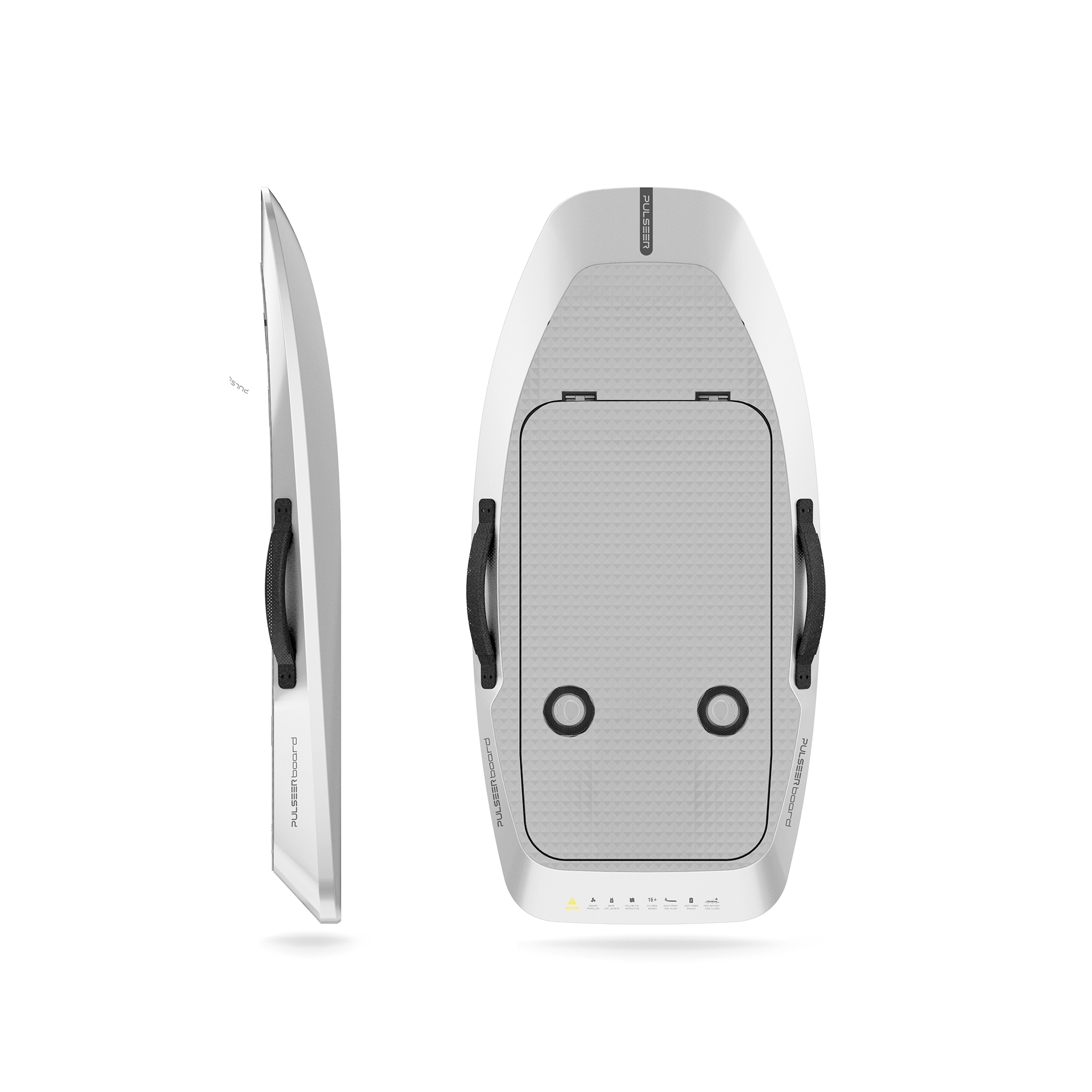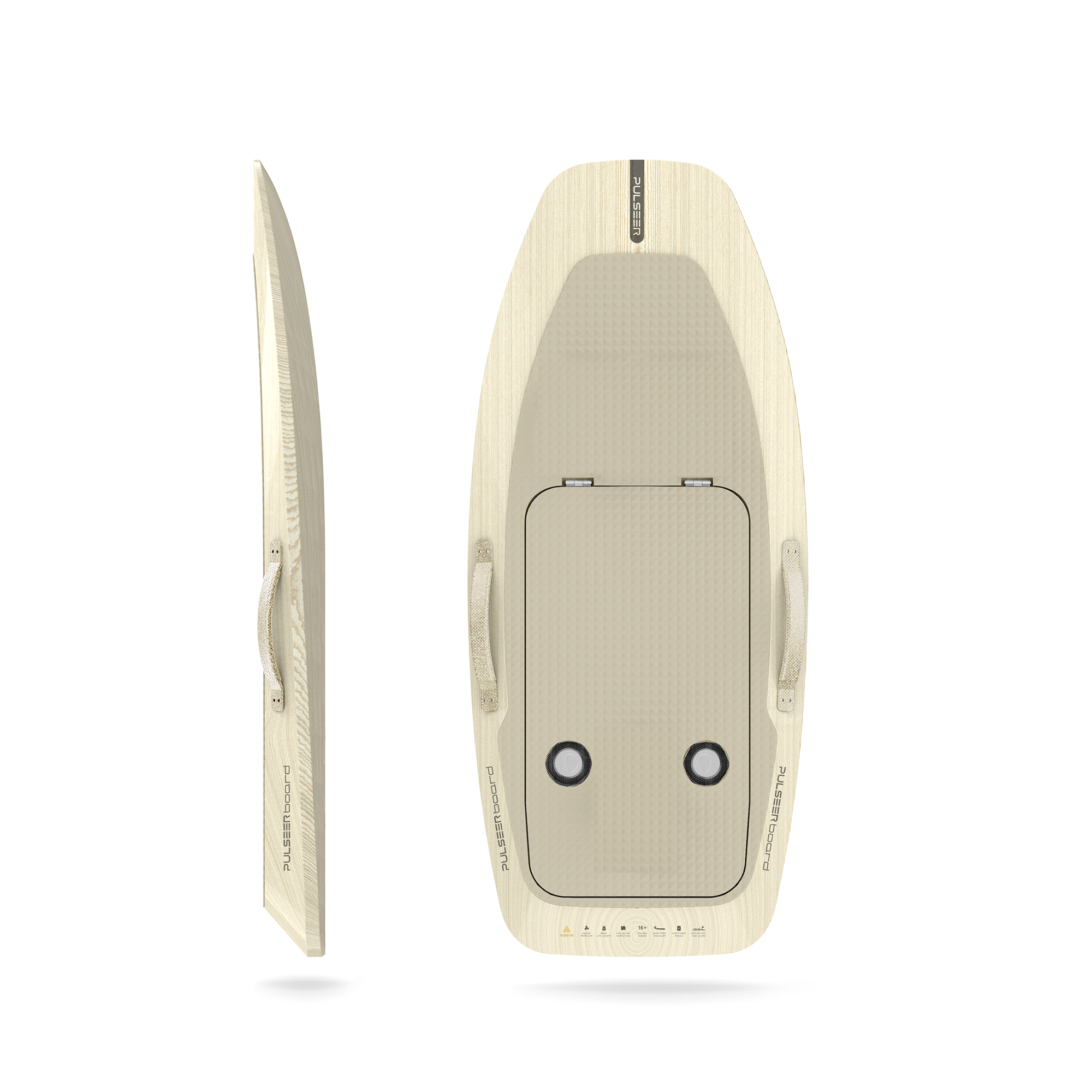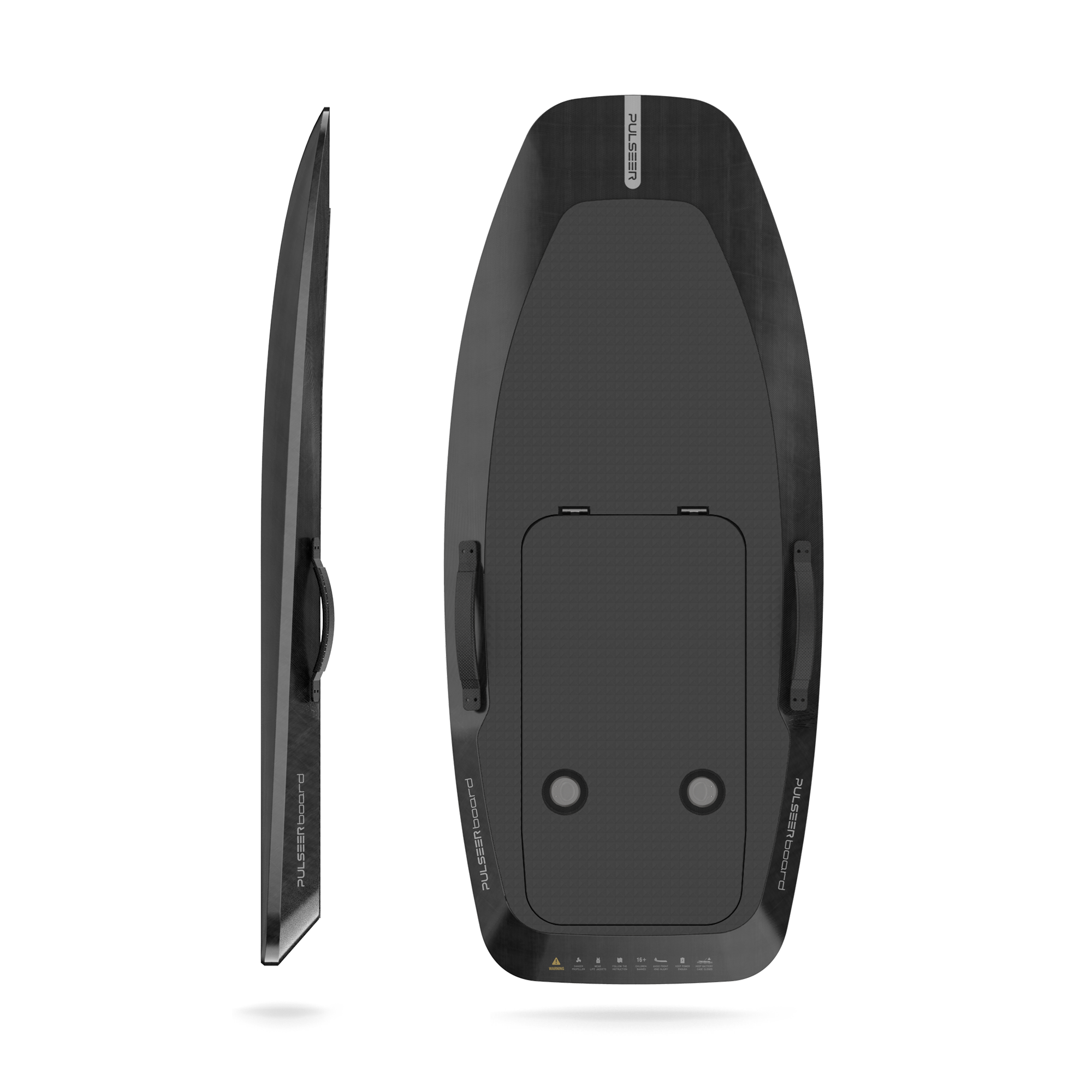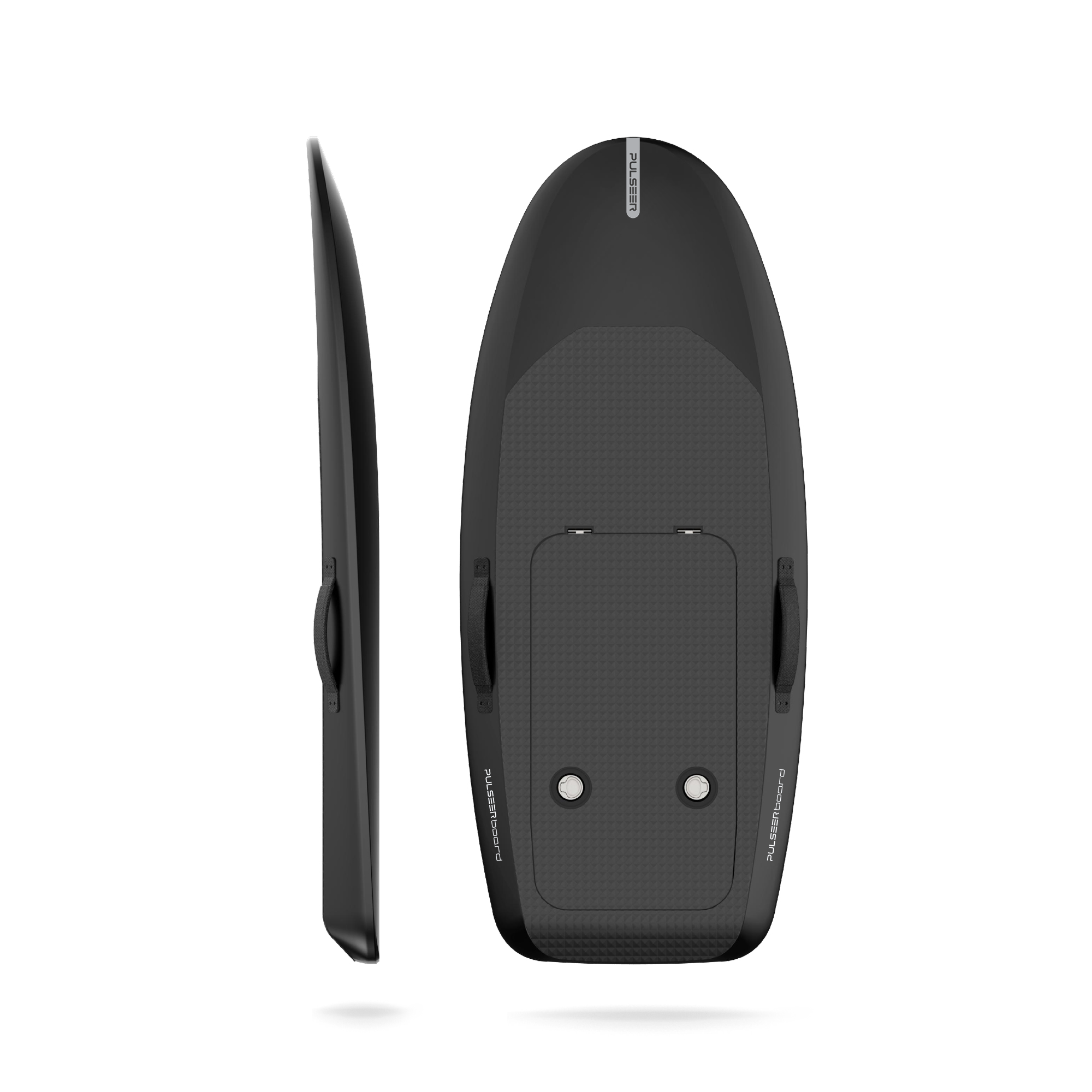To choose an electric surfboard, consider your skill level, desired performance, and the typical water conditions you'll encounter.
Understanding Electric Surfboards
Electric surfboards, a revolutionary twist to traditional surfing, offer the thrill of riding waves with the addition of an electric motor. They cater to a wide range of surfers, from beginners to experts, providing a unique blend of technology and sport.
What is an Electric Surfboard?
An electric surfboard is a high-tech watercraft equipped with a motor and a battery, designed to glide across water surfaces at varying speeds. Unlike traditional surfboards, these boards come with a hand-held remote, allowing surfers to control speed effortlessly. The typical board can reach speeds up to 25-35 mph, depending on the model and conditions.
Benefits of Electric Surfboarding
Electric surfboarding stands out with several key benefits:
- Accessibility: Ideal for non-surfers or those with limited physical abilities, allowing them to enjoy the water without needing to catch waves.
- Extended Surfing Time: The motor provides consistent propulsion, enabling longer sessions on the water.
- Environmental Impact: Many models are eco-friendly, using electric power to minimize carbon emissions.
Electric vs. Traditional Surfboards
Comparing electric and traditional surfboards highlights significant differences:
- Power Source: Electric surfboards use motors powered by batteries, offering consistent speed and motion, whereas traditional boards rely solely on physical strength and wave conditions.
- Speed and Ease: Electric boards provide a stable, high-speed experience with less effort, making them suitable for a variety of water conditions.
- Cost and Maintenance: Electric surfboards generally have a higher initial cost, ranging from $3,000 to $15,000, and require regular maintenance to ensure the longevity of electronic components. In contrast, traditional surfboards are more budget-friendly with prices typically between $300 and $1,000, and require minimal upkeep.
Assessing Maneuverability
Maneuverability stands as a crucial aspect of an electric surfboard, dictating how well the rider can control and steer the board on the water. A combination of board design, weight, and advanced technological features contributes to this attribute.
Surf Board U1 / E-Ultra

The Surf Board U1 stands out as the epitome of lightweight design, available in Carbon Black, White, Wooden Color, and Space Grey with a sleek carbon fiber construction. With dimensions of 4'2'' by 23'' and a volume of 54 liters, this board strikes a perfect balance between agility and stability, catering to those who seek precise control and stylish performance on the water.
The Importance of Board Shape and Size
The shape and size of the surfboard play pivotal roles in determining its maneuverability. A shorter board, typically ranging from 5 to 7 feet, offers more agility and is easier to turn, making it ideal for quick maneuvers and sharp turns. On the other hand, a longer board, around 8 to 12 feet, provides better stability but requires more effort to maneuver.
- Board Shape: The outline of the board, including its nose, tail, and rails, significantly affects how it moves in the water. Boards with pointed noses and thinner tails, for example, are designed for speed and quick turns.
- Board Size: The volume and length of the board influence its buoyancy and stability. A board with higher volume and wider dimensions offers more stability but may reduce maneuverability.
Weight and Its Impact on Handling
The weight of the surfboard, influenced by its materials and the weight of the onboard motor and battery, is a determining factor in its handling. Electric surfboards typically weigh between 15 to 30 kilograms (33 to 66 pounds).
- Lighter Boards: Easier to maneuver and more responsive to rider input. They are ideal for advanced surfers looking to perform tricks and sharp turns.
- Heavier Boards: Offer more stability and are often more suitable for beginners. However, the added weight can make the board less responsive and harder to control in tight maneuvers.
Advanced Features for Enhanced Control
Modern electric surfboards incorporate advanced features to augment control and improve the riding experience.
- Motor Power: Electric surfboards come with motors ranging from 3 to 10 kW, directly impacting their thrust and speed. A more powerful motor can enhance the board's responsiveness and ability to maneuver in various water conditions.
- Battery Life: The duration of the ride is contingent on battery capacity, typically ranging from 20 to 60 minutes on a full charge. A longer battery life allows for extended sessions and fewer concerns about losing power in critical moments.
- Remote Control Systems: Handheld wireless controllers allow riders to adjust speed settings seamlessly, offering precise control over the surfboard's maneuverability.
Evaluating Stability and Balance
Stability and balance are key to an enjoyable and safe surfboarding experience, especially when dealing with the dynamic conditions of the water. These factors depend on the board's design, the rider's position, and the interaction with the water.
Surf Board P1 / E-Pro

The Surf Board P1 crafted with lightweight carbon fiber, offers an exquisite balance of size and volume, ensuring optimal maneuverability and ease of use. Choose from four stylish colors, including Carbon Black, Wooden Color, White, and Space Grey. With its compact dimensions of 5 feet in length and 24.5 inches in width, this surfboard is a versatile choice suitable for both enthusiasts and seasoned surfers.
Finding the Right Board Thickness and Width
The dimensions of the board, particularly its thickness and width, are crucial for maintaining balance and stability.
- Board Thickness: A thicker board provides more buoyancy, keeping it afloat and stable in the water. Electric surfboards typically have a thickness ranging from 4 to 8 inches. Choosing the correct thickness is essential to support the rider's weight without compromising performance.
- Board Width: A wider board offers a more substantial platform for the rider, enhancing balance. Widths usually vary from 25 to 35 inches. A wider board can be especially beneficial for beginners who are still developing their balance and coordination.
Importance of Footpad and Grip
The surface of the surfboard, where the rider stands, plays a significant role in stability and control.
- Footpad Material: The footpad, often made from materials like EVA foam, provides cushioning and grip. This not only makes the ride more comfortable but also aids in maintaining balance and control during maneuvers.
- Grip Texture: The texture of the footpad affects the rider's grip on the board. A well-designed grip can prevent slipping, ensuring that the rider remains stable even in rough water conditions or during sharp turns.
Role of Fins in Surfboard Stability
Fins are a crucial component in the surfboard's design, impacting its stability and maneuverability in the water.
- Fin Configuration: Surfboards can come with different fin setups, including single, twin, thruster (three fins), and quad configurations. The choice of setup can significantly affect the board's stability and how it responds to turns.
- Fin Size and Shape: Larger fins provide more stability and better hold in the water, suitable for bigger waves or riders who prioritize stability. Smaller fins make the board more maneuverable and are often preferred by surfers who want to perform quick turns and tricks.
Analyzing Performance Factors
The performance of an electric surfboard is a composite measure that includes its speed, the efficiency of its motor, and how well it adapts to different water conditions. These factors determine the overall experience and satisfaction of the rider.
Surf Board S1 / E-Standard

The Surf Board S1 engineered with carbon fiber construction, is available in a range of stylish hues, including Carbon Black, White, Wooden Color, and Space Grey, catering to diverse preferences. With dimensions of 5'8'' by 28'', this surfboard strikes a perfect balance, offering a volume of 100 liters that suits surfers valuing both spaciousness and maneuverability on the waves.
Battery Life and Speed
Battery life and speed are directly correlated, impacting the duration and thrill of your surfboarding experience.
- Battery Life: The longevity of a surfboard session is dictated by battery capacity, usually measured in watt-hours (Wh). A typical electric surfboard battery ranges from 500Wh to 2000Wh, offering a ride time between 20 minutes to an hour, depending on usage intensity and conditions.
- Speed: The speed of an electric surfboard is a function of its motor power and the efficiency of its design. Most electric surfboards can reach speeds between 25 to 35 mph, with some high-performance models capable of exceeding this range.
Motor Power and Board Efficiency
The motor is the heart of an electric surfboard, and its power, coupled with the board's efficiency, dictates performance.
- Motor Power: Measured in kilowatts (kW), motor power typically ranges from 3 to 10 kW. A more powerful motor can produce greater speed and acceleration but may also consume battery life more quickly.
- Board Efficiency: The efficiency of an electric surfboard is influenced by its shape, weight, and overall design. Boards with hydrodynamic shapes and lightweight materials can reduce water resistance, enhancing speed and battery life.
Performance in Different Water Conditions
The adaptability of an electric surfboard to different water conditions is essential for a consistent performance.
- Calm Water: Electric surfboards perform optimally in calm water conditions, achieving maximum speed and battery efficiency.
- Choppy Water: In choppy conditions, a board's stability and rider's skill become pivotal. Boards with wider shapes and higher buoyancy can offer better control.
- Waves: While electric surfboards are primarily designed for flat water, some models are equipped to handle waves. These boards are usually more robust, with designs that enable easier maneuvering in the surf.
Considering Versatility and Usage
The versatility and usage of an electric surfboard encompass how well it caters to different skill levels, adapts to various wave conditions, and accommodates the need for portability and travel-friendliness.
Surf Board A1 / E-Gla

The Surf Board A1 uses fiberglass construction which provide superior stability and glide on the water with a budget-friendly price. Available in Carbon Black color, it delivers both performance and style. Its 170cm length and 72cm width are designed for fluid maneuverability and ease of use, making it the perfect choice for enthusiasts seeking a 100-liter board that excels for all levels of riders.
Boards for Beginners vs. Advanced Surfers
Choosing the right electric surfboard significantly depends on the rider's experience level, which dictates the board's design and features.
- Beginners: Beginner surfers benefit from boards that offer greater stability and ease of control. These boards are typically wider, thicker, and have a more buoyant design, with a length usually ranging between 7 to 10 feet. They may have lower top speeds (around 15-20 mph) to ensure safety as the rider learns.
- Advanced Surfers: Advanced riders often seek boards that provide higher speed, agility, and responsiveness. These boards are narrower, with a more streamlined shape, and equipped with powerful motors that can exceed 10 kW, pushing speeds beyond 30 mph. They may also feature advanced control systems for precise maneuverability.
Versatile Boards for Various Wave Conditions
A versatile electric surfboard can adapt to different water environments, providing a consistent performance whether in calm lakes or wavy seas.
- Flat Water: Boards designed for flat water typically emphasize speed and smooth gliding. They have a streamlined shape and a powerful motor to maximize efficiency and speed.
- Choppy Water and Waves: Boards suitable for choppy water or waves are built to offer stability and durability. They may have additional features like reinforced structures, wider shapes, and flexible fins to handle the demanding conditions.
Travel-Friendly Electric Surfboards
For surfers on the go, portability and ease of transport are key considerations.
- Weight and Size: A lightweight and compact design facilitates transportation. Boards weighing less than 30 pounds are considered travel-friendly, and some may come with detachable components for easier packing.
- Battery and Motor Detachability: Some models offer detachable batteries and motors, significantly reducing the weight and size for travel. This feature also aids in meeting airline regulations for battery sizes, ensuring that you can take your adventure worldwide.

